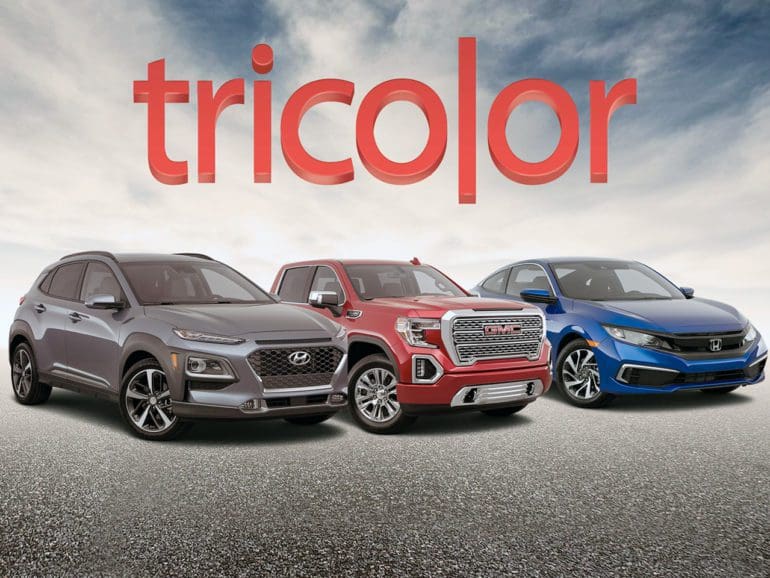Tricolor uses artificial intelligence, a vast data trove, and decades of experience in auto finance to provide adequate credit to Hispanic motorists in the United States via an integrated model.
It’s a group that’s, in many cases, a pretty safe bet, CEO Daniel Chu said.

Chu has spent most of the past three decades working in auto finance, focusing on a Hispanic population in the United States that on its own would be the eighth-largest GDP in the world.
Collectively, Hispanics are often misunderstood because lenders don’t take the time to develop underwriting models that consider their unique circumstances.
One in three cannot access mainstream financial services.
How Tricolor identifies the many safe bets
Tricolor took the time, and it’s paying off.
Chu is based in Texas, and he saw how Hispanic borrowers, especially undocumented ones, were uniquely challenged in obtaining affordable credit.
Many do not have Social Security Numbers, and the bureaus don’t have any data.
But the community is motivated, and that makes them a reasonable risk. They came to the United States to pursue better lives for their families. They take their obligations seriously.
With that foundation, Chu began speaking with data scientists. He asked them what would happen if he could gather sufficient amounts of data so he could score consumers who haven’t generated bureau data.
Chu said that Tricolor asks 100 questions on their applications, many of which are unique. Over the years, they have accumulated 25 million non-traditional data points.
AI’s importance in Tricolor’s business model
For the past five years, Tricolor has added AI to the mix. That has allowed them to identify patterns that correlate well with loan performance. Chu said they could effectively score the unscorable with precision.
It also empowers Tricolor to charge lower rates while making more money. They can better identify lower risks in a group others consider homogenous.
“We know who can pay or who is going to have a high probability of performing,” Chu said. “So because we know who has a high probability, we can offer them financing terms vastly superior to anything else they can find. And they’re going to take us up on that offer.”
Data isn’t the only non-traditional aspect of the Tricolor story. Chu said his goal isn’t to maximize the lifetime value of each customer but to build financial inclusion for the entire sector.
Providing customers with more opportunity
“We want to see our customer graduate upstream,” he said. “We want to see our customer get their subsequent financing at a new car dealership or with a much lower cost of capital, ultimately building a credit profile that would enable them to access funding where they could accumulate some wealth.
“We would like to see Hispanics participate in that. The white population in the US has an average household wealth that is six times the Hispanic population’s. And it really comes down to the fact that Hispanics have been excluded from home ownership in America, and many are either intimidated by traditional financial services or just can’t access them because of their status.”
Chu said that the timing is optimal because Hispanics are a growing economic force. Most of America’s population growth is attributable to them. More than 80% of the workforce growth is because of Hispanics.
By 2060 30% of the workforce will be Hispanic. Their presence is moving beyond the border states to include most areas of the country that are seeing significant population growth.
The factors behind loan performance
The basic assumption behind Tricolor’s system is stability correlates with successful loan performance. Over time, Tricolor has identified some key factors.
The first is how many people live in the applicant’s house. The more there are, the more anchored they are likely to be. In California and Texas, the average house size is about double that of the overall tally.
That is important, and it was borne out in the pandemic, Chu explained. Many assumed Hispanics would be slammed by closures, as they could not work remotely in hospitality, construction, landscaping, and agriculture. They have been resilient.
“They’re putting more people under one roof and amortizing that high cost across more incomes,” Chu said. “Our average loan supports the transportation, in most cases, for the entire household. And so, these large households have multiple incomes to keep their obligation on their loan.
“And even within those multiple income earners, many of those individuals had more than one full-time job. And so disruptions to employment, whether a pandemic or maybe a recession, we have not seen that impact this borrower as dramatically because they have multiple incomes to rely on. This is a consumer that again is determined to survive in America.”
Average borrower not documented
Chu said Tricolor’s average borrower had spent more than 15 years in the United States, and most are not documented. Given the opportunity size, some push them to dig deeper into newer arrivals. Chu opposes that, citing the high value placed on long-term stability.
The model looks for evidence of planning. An ATT bill is more favorable than a prepaid phone, Metro PCS, or Sprint. Proof of insurance is another plus. That layer of alternative data is primarily for fraud protection. Combined with the growth in AI, it has grown powerful over the last half-decade.
Tricolor’s performance has impressed the market, Chu said. They’ve disbursed more than $2 billion in loans, launched a new financing arm, and expanded into five states. Last fall, Blackrock invested $90 million, and the company completed seven securitizations. Customer acquisition costs are less than $150 per person, and 80% of leads come from digital channels. They won Fintech Nexus’ 2022 award for financial inclusion.
A unique, integrated business model
Chu relies on more than data. Tricolor has an integrated business model where they also run a retail operation that offers cars for purchase.
He said Tricolor spends an average of $2,200 reconditioning each vehicle in the hopes it helps the customer avoid mechanical issues that could force them to take out a high-interest loan to cover. Free warranties are provided.
“We want to keep the LTVs very low, but by ensuring that the car has high quality, that integrated model provides the best value proposition to the consumer,” Chu said.
Technology plays a role in inventory, too, Chu said. An automated tool scans auction feeds for reliable cars that correlate to successful loan performance. The average Ford F150 buyer performs like someone with a 725 FICO score, for example.
Chu said that this unique level of service offered to a largely ignored group might be the most vital selling point. The power of choice is unique, as are the financing terms and pricing transparency.
“That corresponds to trust, that corresponds to conversion, that corresponds to this total profitability model,” Chu said.
“We market to the customers that we know are going to perform. “That’s where that integrated model is powerful. If you look at most lenders, the reality is that if you’re Santander, Capital One, you’re in an adverse relationship with your customer, the motor vehicle dealer. The dealer is trying to maximize profit. You’re trying to underwrite a good loan. Those are not aligned.”


